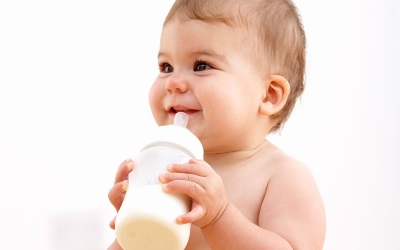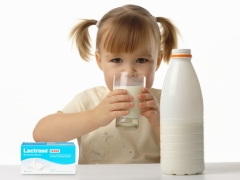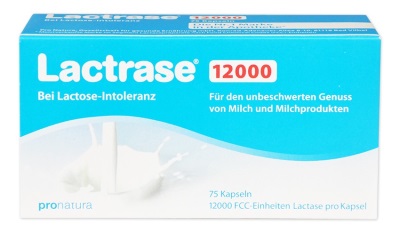Why do we need lactase preparations for children?
If the body lacks such an enzyme as lactase, then this deficiency can be filled with the use of drugs that include this enzyme. The action of all lactase preparations is the breakdown lactose in the human intestine to monosaccharides glucose and galactose.
Indications
The main indication for prescribing drugs, which are based on the lactase enzyme, is such a digestive problem as lactose intolerance in a child. With this pathological condition, the body does not have enough lactase to process the milk sugar that comes from food. And lactase preparations are needed to make up for the lack of this enzyme.
The use of these drugs helps to eliminate symptoms such as diarrhea, colic, flatulence, poor weight gain.
Breastfeeding a child with lactose intolerance in this case, you can save.
Benefits
- Lactase preparations effectively help reduce the manifestations and symptoms of lactase deficiency and preserve breastfeeding.
- Reception of lactase helps to improve digestion and helps to normalize the intestinal microflora.
The use of lactase drugs can significantly expand the diet of people with intolerance to dairy products. If whole milk can be made lactose-free, then it is impossible to free sour-milk products from milk sugar without impairing their taste, appearance and consistency. That is why the intake of lactase helps to include in the diet of yogurt, cottage cheese, cheese curds and other dairy products.
Harm
Cases of overdose, as well as side effects of these drugs have not been identified.
For newborns
For babies, lactase preparations are given along with mother’s milk. A woman drains some milk and dilutes the lactase preparation in it, after which she leaves the milk for ten minutes for fermentation. Milk is given to the child, after which the baby is breastfed.
Children who are fed mixtures, lactase preparations are given along with food. The drug is poured into the entire volume of the mixture for one feeding and after 10 minutes give the baby.

For older children
Children over five years old can be given lactase in capsules, but if the child cannot still swallow them, then it is permissible to pour the contents of the capsules into non-hot dairy food. Dosage for five to seven-year-old children is from two to seven lactase capsules at a time.
Kinds
All drugs with lactase conditionally divided into 2 groups:
- Preparations, lactases for which are synthesized by microorganisms and yeast fungi with the manifestation of activity in a weakly alkaline and neutral environment. Such lactases "work" only at pH 6-7, so the scope of their use is limited. They are used only for the fermentation of whole milk immediately before consumption. These drugs include Lactade, Lactozym, Maxylakt, Lact-Aid.
- Drugs for which lactase is synthesized by fungi capable of acting in an acidic environment - at pH from 3.5 to 5. These lactases effectively break down lactose in fermented milk products. These drugs include the drug Lactraz.
Lactase preparations are:
- Lactase. Each capsule contains 3450 U of the enzyme. It is recommended during the use of dairy products.
- Lactraz. The drug is taken in 1-2 capsules before taking the dairy product.
- Tilactase. The drug can be added to dairy products with the calculation of 2 capsules per 1 liter, and then keep these products in the refrigerator.
- Lactase baby. Each capsule of this drug contains 700 U of the enzyme. Assigned to children per 100 ml of the mixture or breast milk 1 capsule.
Lactase baby
The lactase drug administered to children from the neonatal period to the age of 7 is Lactase Baby. This drug helps to quickly eliminate the symptoms of lactase deficiency and improve digestion. Its advantage over other lactase preparations is in a lower dosage, which makes it possible to better select the right amount of enzyme for one feeding.
The drug is represented by a capsule form, but it can be given without a capsule to children under five (the contents of the capsule are removed and dissolved in milk with a temperature not higher than +55 degrees). The drug is given during each feeding with food, including lactose.
The dosage is determined by the age of the child, as well as the volume of food. For example, children younger than one year are prescribed one capsule of the drug per 100 ml of milk.












